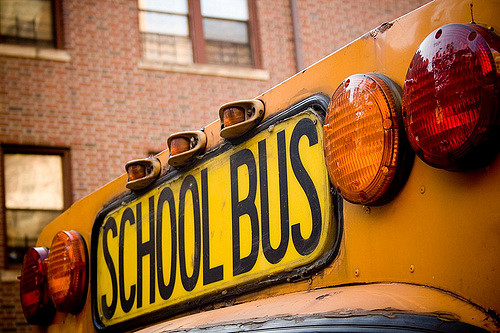Schools aren’t as safe as they once were. The National Crime Prevention Council says that “[o]verall, schools are one of the safest places children can be,” but with incidents of school shootings still making headlines, it’s understandable that parents are concerned. Schools are taking action.
Public and private schools in the U.S. take the threat of school violence very seriously hiring school resource officers to keep both students and staff safe in school, installing bullet resistant barriers in schools, and training both students and staff members on procedures to follow should an active shooter situation arise in, around or near their school.
Know What Safety Measures and Training Your School Offers
We recommend that each parent find out the answers to the following questions. Talk to your school’s or school district’s administrators and school board to learn how they are preparing your school for an emergency.
Has the school/district implemented ALICE Training?
ALICE is a program recognized nationwide by schools and universities for its exceptional training in how to respond in an active shooter situation. The term ALICE stands for Alert, Lock-down, Inform, Counter, and Evacuate, yet schools love it because it offers administrators, staff and students more than the traditional “lock down”-only approach and looks to actively counter the threat as it unfolds.
This school active shooter plan has been embraced by more than 1,600 kindergarten through grade 12 schools and 400 universities nationwide.
Does your child’s school have a school resource or security officer?
The National Center for Education Statistics reported in 2015 that 43 percent of all public schools in the country employed a school resource officer in the 2013-2014 school year, with more than 46,000 full-time and 36,000 part-time officers on duty. High schools and middle schools have been in the vanguard when it comes to hiring resource officers, but elementary schools are enlisting these safety officers, as well.
While many schools use these officers for D.A.R.E. programs or to be a friendly ear for children share their troubles, many of these law enforcement officers are trained in ALICE techniques and school emergency plans.
What protocols does your school have for checking children and visitors in and out of school buildings?
It’s wise if all visitors – including parent volunteers – produce identification when they come to volunteer or pick up children for appointments. The school also should ask all parents at the beginning of the school year to list those adults (grandparents, aunts, close friends) whom the parent designates as OK to pick up the child in the parent’s absence. These individuals also must present identification. All visitors also should wear a visitor badge while they are in the school’s building(s).
Visitors also must be required to sign out when they leave the school. This way there’s a record of when they signed in as well as when they left, providing two up-front benefits:
- It could help administration know if someone is still in the building after hours.
- Such documentation could help investigators put together a timeline in case of an incident.
What types of barriers does the school have in place?
The U.S. Department of Homeland security recommends that all schools manage the access visitors have to a school. Even if such barriers slow an active shooter down by just 20 seconds, school and city/regional law enforcement organizations should be able to mitigate or even neutralize the threat, especially if the barrier prevents the shooter from gaining access to the school’s building.
Barrier-free bullet resistant barriers could well be the answer, especially if they meet school fire/safety and ADA requirements. Such barriers also could help keep rowdy students from causing trouble, keep vandals off the premises, and also slow down an active shooter’s entry into a school.
Do administrators know about these specific school safety strategies?
Michael Dorn, the current executive director of Safe Havens International and a former school system police chief and university police lieutenant, discusses 20 prevention strategies in a September article on Campus Safety Magazine. Consider investing the time to read this article and talk to your school’s administrators and school board members. Specific tactics include:
- Training school personnel in how to recognize the different physical behaviors people who are carrying a concealed weapon may exhibit.
- Training staff in pattern matching and recognition. Doing so helps them spot behavior “incongruent for the time, setting and context” of a situation, helping staff possibly spot people who are potential dangers.
- Asking the school to set up a 24-hour anonymous tip line (phone and texting). Such tip lines have helped to prevent “numerous planned campus shootings, suicides and other deadly situations” since 1990.
- Having the school district’s police department monitor social media, not only of current students’ postings, but former students and even former employees. Dorn acknowledges monitoring social media can be challenging (too many students), but he mentions that “considerable efforts” are underway in the creation of “effective and practical software solutions.”
Next Steps:
- Download our free School Safety Checklist and discuss it with your school’s administrators and staff.
- Follow us on Facebook, Twitter and LinkedIn.
- Get the latest security news by subscribing to our blog


